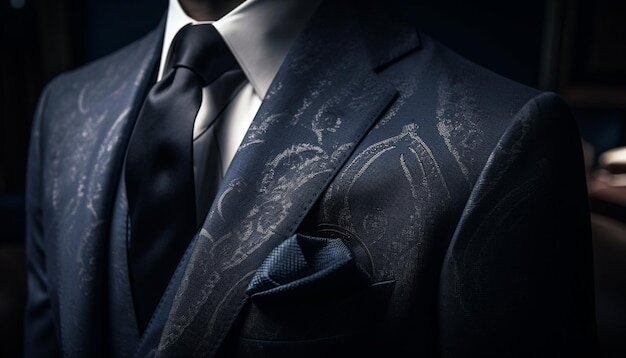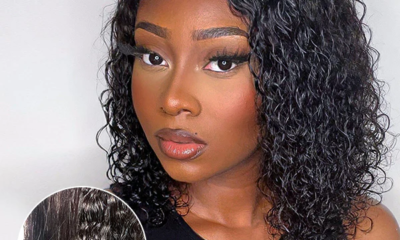Fashion
Women Suit: Elevate Your Style with Timeless Elegance

The womens suit is a fashion icon in its own right, representing strength, refinement, and classic style. Those were the days when men wore suits exclusively. This timeless combination has been taken up by women, who have given it new meaning to reflect their personal style and make a statement in all spheres of life.
Traditional Beginnings
The journey of women’s suits dates back to the early 20th century, when pioneering women began breaking societal norms by wearing tailored jackets and trousers, challenging the conventional notion of femininity.
The Rise of Women’s Power Suits
As women entered the workforce in greater numbers, the concept of power dressing emerged. The ’80s witnessed the rise of power suits, characterized by sharp lines, padded shoulders, and bold colors, reflecting women’s increasing presence in corporate settings.
Characteristics of a Well-Fitted Women’s Suit
A well-fitted women’s suit is defined by its impeccable tailoring, which accentuates the natural curves of the body without being restrictive. Key features include precise shoulder seams, a defined waistline, and trousers that fall elegantly over the hips and legs.
Classic Tailored Suit
The classic tailored suit exudes timeless charm with its structured silhouette and clean lines. It remains a staple choice for formal occasions and professional settings, offering versatility and sophistication.
Modern and Contemporary Designs
In contrast, modern and contemporary designs offer a fresh take on the traditional suit, incorporating elements such as cropped blazers, wide-leg trousers, and asymmetrical cuts. These styles cater to the evolving tastes of fashion-forward individuals seeking to make a statement.
Fabric Choices for Women’s Suits
From luxurious wool to lightweight linen, the choice of fabric plays a crucial role in determining the look and feel of a women’s suit.
Wool
Renowned for its durability and insulating properties, wool is a popular choice for suits, providing comfort and elegance year-round.
Cotton
Cotton suits offer breathability and a soft texture, making them ideal for warmer climates or casual settings.
Linen
Linen suits exude a relaxed yet refined aesthetic, perfect for summer events or beach weddings.
Synthetic Fabrics
Synthetic fabrics like polyester blend offer affordability and easy maintenance, catering to budget-conscious individuals without compromising style.
Classic Neutrals
Timeless hues such as black, navy, and gray reign supreme in the realm of women’s suits, exuding sophistication and versatility.
Bold Colors and Prints
For those daring to stand out, bold colors like red, emerald green, or royal blue, along with statement prints such as pinstripes or plaids, add a vibrant touch to traditional suiting.
Accessories to Complement Women’s Suits
Accessories play a vital role in elevating the overall look of a women’s suit, offering endless opportunities for personal expression and style.
Shoes
Whether opting for classic pumps, sleek loafers, or trendy ankle boots, the right footwear can enhance the elegance and sophistication of a women’s suit.
Handbags
A stylish handbag serves as both a functional accessory and a fashion statement, adding a touch of flair to any ensemble.
Jewelry
From delicate earrings to statement necklaces, the choice of jewelry can accentuate the neckline of a suit and add a hint of glamour to the overall look.
Versatility of Women’s Suits
One of the greatest attributes of women’s suits is their versatility, seamlessly transitioning from formal office attire to sophisticated evening wear or casual weekend ensembles.
Office Wear
A tailored suit exudes professionalism and confidence, making it the go-to choice for corporate settings and business meetings.
Formal Events
For special occasions such as weddings or cocktail parties, a women’s suit offers a chic alternative to traditional dresses, allowing individuals to make a bold fashion statement while staying true to their personal style.
Casual Occasions
Pairing a suit jacket with jeans or mixing and matching separates allows for a relaxed yet polished look suitable for brunches, shopping trips, or casual outings with friends.
How to Style a Women’s Suit
Styling a women’s suit is all about striking the right balance between sophistication and individuality, allowing one to express their personality while adhering to the occasion’s dress code.
Professional Look
Opt for classic colors and tailored silhouettes, accessorizing with minimalistic jewelry and sleek footwear for a polished office-ready ensemble.
Chic and Trendy
Experiment with bold colors, statement prints, and unconventional accessories to inject a dose of personality and flair into your look, perfect for fashion-forward individuals seeking to make a statement.
Customizing Women’s Suits
Tailoring plays a crucial role in ensuring that a women’s suit fits like a glove, emphasizing the wearer’s unique body shape and proportions.
Tailoring Options
From hemming trousers to adjusting sleeve lengths, a skilled tailor can make precise alterations to enhance the overall fit and silhouette of a suit, ensuring maximum comfort and confidence.
Personalization Choices
Customization options such as selecting fabric textures, choosing button styles, or adding personalized monograms allow individuals to create a bespoke suit that reflects their personal taste and style preferences.
Budget-Friendly Options for Women’s Suits
While designer suits may come with a hefty price tag, there are plenty of budget-friendly alternatives available, catering to individuals seeking quality without breaking the bank.
Affordable Brands
Several brands offer stylish and well-made suits at accessible price points, making it possible to build a versatile wardrobe without overspending.
Secondhand Markets
Exploring secondhand stores or online marketplaces presents an opportunity to discover pre-loved designer suits at a fraction of their original cost, allowing budget-conscious shoppers to snag a great deal while reducing their environmental footprint.
Sustainable and Ethical Women’s Suit Brands
In recent years, there has been a growing demand for sustainable and ethically produced fashion, prompting many brands to prioritize eco-friendly materials and ethical manufacturing practices in their suit production.
Tips for Caring for Women’s Suits
Proper care and maintenance are essential for prolonging the lifespan of a women’s suit, ensuring that it retains its shape, color, and overall quality for years to come.
Cleaning and Maintenance
Follow the manufacturer’s instructions for cleaning and laundering your suit, opting for professional dry cleaning when necessary to preserve its integrity.
Storage
Store your suits in breathable garment bags or on sturdy hangers to prevent wrinkles and maintain their shape between wears, avoiding overcrowding in closets or storage spaces.
The Empowerment Factor of Women’s Suits
Beyond its sartorial appeal, the women’s suit holds significant cultural and symbolic value, serving as a powerful tool for empowerment and self-expression.
Breaking Stereotypes
By challenging traditional gender norms and expectations, women who don suits assert their autonomy and redefine notions of femininity and power in society.
Confidence Booster
The act of donning a well-fitted suit instills a sense of confidence and self-assurance, empowering individuals to navigate professional and social environments with poise and authority.
Conclusion
The women’s suit is more than just a passing fad; it is a symbol of strength, adaptability, and sophistication. Women have taken to the suit in all its forms, from traditional tailoring to daring new styles, and have used it to express themselves powerfully and in a classic way.
FAQs
Are women’s suits suitable for all body types?
Yes, women’s suits come in a variety of cuts and styles to flatter different body shapes, from hourglass to pear-shaped figures.
Can I wear a women’s suit to a casual event?
Absolutely! Pairing a suit jacket with jeans or trousers offers a stylish yet relaxed look suitable for various casual occasions.
How do I accessorize a women’s suit for a formal event?
Opt for statement jewelry, elegant heels, and a sleek clutch to elevate your women’s suit for formal events like weddings or galas.
What should I look for when buying a women’s suit?
Look for quality fabrics, impeccable tailoring, and a fit that accentuates your body shape while allowing for comfort and mobility.
Can I mix and match pieces from different suits?
Yes, mixing and matching suit separates allows for endless outfit possibilities, enabling you to create unique looks tailored to your personal style.
Fashion
Convey Your Emotions in a Meaningful Way with Personalised Floral Gifts

Sending flower arrangements to your loved ones is not a lovely gesture but an excellent way to express your deep love and care. Floral gifts are a great way to brighten their day and bring a genuine smile. In the hustle and bustle of everyday life, it is difficult to visit offline stores, that’s where online flower delivery services come to your rescue.
It is easy to pick a pre-made bouquet and send it as a gift, but there is a different charm to a personalised floral arrangement. Hence, if you want to make your dear ones’ day extra special, take time to personalize a floral arrangement to surprise them. This sweet gesture will create a lasting impression on their mind and hearts. So, if you want to send flowers to mumbai with a personal touch, keep reading this blog to explore some effective tips on customizing your floral gift.
6 Wonderful Tips for Personalising Your Floral Gift
Do you know adding a personal touch to any gift multiplies its value? Well, the same goes with the floral arrangements too. The value and power of unique personalized gifts unmatched. So, count on our special tips to tailor your flower arrangement.
1. Consider the Favourite Colours and Flowers of Recipient
The first aspect of making a personalised flower arrangement is choosing the preferred flowers and colours of your loved ones. It is a simple yet powerful gesture that showcases the amount of effort you have made to put together to create the floral gift. Also, it symbolises how much you love and care for them, enhancing the entire gifting experience.
2. Add Personal Touches to the Arrangements
To add more value and make your gift more special consider adding personal touches to it. You don’t have to pour your blood, sweat or tears into this, even a small effort like adding a handwritten note, attaching a quote (complementing the occasion), or a meaningful picture to your floral arrangement can make a significant impact and create lasting memories in the recipient’s mind.
3. Experiment with Different Types and Colours of Flowers
If you want to create a unique floral arrangement, that’s different from the rest, try mixing and matching different varieties of flowers. You can do some permutation and combination in different shapes, sizes, textures, and colours of the blooms to add more visual appeal and depth to your floral gift. Try making a bouquet that compliments the occasion or the personality of the recipient. Or you can order an online flower bouquet of assorted flowers matching the vibe or preferences of your loved one.
4. Choose Flowers with Symbolism Reflecting the Occasion
The world of flowers has its own language. To add more meaning to your gift, choose flowers with symbolism related to the occasion or the message you want to convey to the receiver. For instance, if it’s your wedding anniversary and you want to express love and gratitude towards your spouse for always being there and supporting you, a heart-shaped arrangement of deep red roses will be appropriate for the occasion.
5. Send Flowers in an Astonishing Setting
When looking for out-of-the-box ideas to surprise your loved ones with a floral arrangement, try experimenting with containers to arrange the flowers. For instance, instead of using conventional glass vases, try online flower delivery in India in different containers. It can be a ceramic pot, a personalised or decorative tin, or even a vintage teapot.
6. Add Meaningful Gifts to The Floral Arrangements
To add more meaning to your gift, you can pair it with sweet treats or thoughtful gifts like cakes, chocolates, sweets, personalised coffee mugs, cushions or customised wall art pieces. You can find unique flower combos, on various websites and send them to your loved ones based on the occasion, like flowers with chocolates for Valentine’s Day or flowers with cakes and teddies for birthdays and anniversaries.
Wrapping Up
Personalising a floral gift makes it extra special and it leaves an emotional impact on the receiver’s mind. However, if you don’t have enough time to do all the customizations on your own, a gifting platform like OyeGifts that offers personalisation options can be your saviour. With this trusted brand by your side, you only have to share your preferences with them, and their expert team will do the rest of the job.
Fashion
Why Should You Choose Tailoring Services in Bangkok
Discover why Bangkok is the ultimate destination for tailoring services, offering exceptional quality, bespoke designs, and unbeatable craftsmanship.

Bangkok is quickly becoming known as one of the world’s best destinations for bespoke suit Bangkok tailoring services. With an abundance of skilled tailors and high-quality fabrics, Bangkok offers unmatched value and craftsmanship when it comes to tailor-made suits Bangkok. Here are the top reasons to get your next bespoke suit made in Bangkok.
Factors to consider while choosing a Tailoring Service in Bangkok are-
- Unparalleled Expertise and Craftsmanship
Bangkok is home to some of the most skilled and experienced tailors in the world. Many of the top tailor in Bangkok workshops employ master tailors with decades of experience in making fully handcrafted, customized business and formalwear suits. They bring an eye for detail and perfection to their work that results in suits made to the highest standards and specifications. The craftsmanship of the finishes, stitching, and cutting rivals what you would find in famous bespoke tailoring streets like London or Milan. Yet the prices in Bangkok are a fraction of what you would pay in those places.
- Specialized Fit and Attention to Your Body Shape
One of the hallmarks of bespoke tailoring is the personalized precision pattern making and cutting to match the customer’s exact body shape. Rather than taking standardized sizes, Bangkok’s tailors will carefully measure you in dozens of places to create a paper pattern unique to your bodily dimensions and posture. This results in a tailored fit beyond what is possible in off-the-rack clothing. The garments will drape perfectly on your body. Throughout the process, the tailors make adjustments and accommodations based on your inputs to ensure you get the desired comfort and look.
- Wide Variety of Fabrics and Customization Options
From super fine wool and cashmere to rare silks, Bangkok’s suit tailors have access to an impressive array of high-quality cloths from around the world, including luxury Italian and English fabrics. This allows you extensive customization when it comes to colors, patterns, textures, and fabric weights. Want a lightweight tropical wool suit or a heavier herringbone tweed for winter? They can create it for you. Beyond fabrics, you have abundant style options for lapels, vents, pockets, buttons, lining, and stitching – allowing you to design a suit to meet both your comfort needs and sartorial tastes.
- Great Value for Money
Given the mastery of the tailors and the quality of fabrics available, bespoke suits in Bangkok deliver tremendous value. Fully tailor-made suits in Bangkok of the finest fabrics can cost $2000+ in Europe or North America. In Bangkok, you can get a suit of comparable quality for $500-800, including quality silk linings, premium buttons, and expert alterations. The lower costs of real estate and labor allow tailors to price bespoke suiting competitively while delivering refinement, stitches-per-inch, and conscientious fitting process on par with the world’s best tailoring houses.
- Fast and Reliable Delivery
Reputable tailors in Bangkok operate efficient operations capable of turning around a handmade, customized suit quite swiftly compared to other bespoke tailoring hubs. It’s common to complete a suit within a week. This makes the city an ideal place to get fitted for a quality bespoke suit even if your time in Bangkok is limited, such as during a vacation. The tailors also have longstanding relationships with shipping companies to ensure prompt, reliable worldwide delivery. So you can have your suit delivered to your doorstep wherever you live.
Tips for Finding the Best Tailors in Bangkok
- Shop Around Before Deciding
Visit a few shops, check reviews online, and inspect the quality of the fabric samples and completed suits on display. Pay attention to the details and construction – this will give you an idea of the tailor’s skills and standards. You’re looking for fine, even stitching, clean seams, perfectly matched patterns across seams, and well-finished buttonholes. Don’t rush the decision or get swayed by clever sales tactics.
- Seek Out Recommendations
Ask hotels, restaurants, and others in the expat community who they would recommend for suit tailoring services. Narrow options to well-reviewed tailors known locally for turning out high-quality bespoke suits for both local and overseas clients. These will be the workshops manned by the top master tailors in the city.
Conclusion
Getting a custom-made suit in Bangkok is an opportunity to experience master craftsmanship while also getting an impeccably fitted suit of the finest materials. Do your research, find an established tailor you connect well with, communicate exactly what you want, and they will deliver a wardrobe showpiece you’ll enjoy wearing for years to come. So next time you need a new suit, consider the talented best tailor in Bangkok shops to make something truly special and unique.
Fashion
The Complete Guide to Tailor Made Suits for Men
Discover everything you need to know about tailor-made suits for men, from fabric selection to perfect fit and style tips.

Friends, let’s be honest – there’s nothing quite like slipping into a sharp, well-fitted suit. It’s an instant confidence booster that commands respect and turns heads wherever you go. But achieving that perfect tailored look straight off the rack? Next to impossible unless you happen to have a cookie-cutter physique.
That’s where tailor-made suits step in. Having a custom suit made by a premium tailor in Bangkok is like making a smart investment that keeps on giving every time you put it on. This is your ultimate roadmap to the world of personalized suits and why it’s a total game-changer for any guy’s closet.
The Beauty of Bespoke
We’ve all had those moments – wrestling with a suit that just doesn’t feel like it’s meant for you. Maybe the shoulders are too broad, the sleeves too short, or it’s all wrinkled in the wrong spots. It’s enough to make even the slickest guy feel a bit off his game.
When you opt for a tailor-made suit crafted by a custom tailor in Bangkok, those fit issues become a thing of the past. These artisans take a full set of measurements and details observations about your unique body shape and posture. Every element, from the jacket length to the pants break, is made to measure for you and only you.
But the personalization goes far beyond just nailing that stylish silhouette. With bespoke suiting, you get to hand-select premium fabrics, accents, and stylistic details that reflect your individual flair. Thinking of a bold plaid paired with a luxurious silk lining? An impeccably dressed Bangkok tailor can make it happen.
Playing the Long Game
While custom suiting does involve a bigger upfront investment compared to rental or off-the-rack options, you have to think bigger picture. A well-made tailor-made suit from an experienced Bangkok tailor can last for decades with proper care and little tailoring tweaks along the way.
Plus, you’re avoiding that dreaded scenario of showing up to an important event or client meeting in the same ill-fitting rental tux or suit as three other guys in attendance. With custom suiting, your look is unique, distinctive, and properly fitted – giving you a certain swagger that rental rigs just can’t replicate.
The Bespoke Process
If the idea of a made-to-measure suit has piqued your interest, here’s a glimpse into the typical custom suit Bangkok experience with a respected Bangkok tailor:
- First, you’ll have an in-depth consultation to discuss your personal style preferences, the occasions you’ll want suiting for, must-have features, and more. This helps guide the tailor’s fabric recommendations and designs.
- From there, it’s into the measuring room for a full set of precise measurements and observation of your stance, posture, and unique physique. The tailor uses these measurements, not just simple sizes, to draft a pattern just for you.
- Next, you’ll collaborate on all the finer details by selecting luxury fabric options, lining, buttons, and accents. This is where you can let your personal style sense shine by creating something totally unique.
- With those specifics locked in, it’s time for your Bangkok tailor to start construction on your made-to-order suit. Expect at least a couple of fittings during this phase to refine every element for a crisp, body-defining finish.
- Finally, you’ll get that grand unveiling – slipping into a garment that conforms flawlessly to every curve, courtesy of your tailor’s steady hands and trained eye. It’s the ultimate sartorial investment that will make you feel like a million bucks for years to come.
Developing a Signature Look
Once you experience the luxury of custom tailor-made suits, there’s a good chance you’ll be hooked. Having a seamless experience with a talented Bangkok tailor opens up a whole new world of possibilities for developing a signature, personalized look.
You can start building out a capsule collection of suits in varied fabrications and colors to have something fitting for every occasion and season. Work with your tailor to incorporate unique details like a signature lining, chic collar stays, or even a custom embroidered monogram.
Those special individualizing touches are what take bespoke suiting to the next level. Before long, you’ll have a steady rotation of perfectly fitted suits that are unmistakably “you” – from the hounds-tooth tailored for power lunches to the tux with custom shawl lapels for black tie affairs. Getting fitted for tailor-made suits in Bangkok can easily become your newest life-enhancing habit.
Fit for Refined Living
There’s simply no substitute for quality tailor-made suits when it comes to refined living. Every discerning gentleman should experience the transformation of finding their perfect fitted suit at least once.
Start networking with well-reviewed tailors in Bangkok and get ready to turn heads at every corporate meeting, formal event, or dapper night out on the town. With customized suiting, confidence and swagger come standard – along with a look that’s distinctively yours.
-

 Fashion9 months ago
Fashion9 months ago2024’s Hottest Lovely Green Dresses You Need to See
-

 Life Style11 months ago
Life Style11 months agoExploring Myfavouriteplaces.org:// blog: A Journey Begins
-

 Technology11 months ago
Technology11 months agoExploring Entretech.org: Unveiling the Future
-

 Business9 months ago
Business9 months agoHow To Choose the Right Career for You
-

 Technology11 months ago
Technology11 months agoGPT66X: Revolutionizing Language Models
-

 Technology8 months ago
Technology8 months agoDigital ID Authentication | Automate User Onboarding and Analysis Framework
-

 Fashion9 months ago
Fashion9 months agoHow to Achieve Effortless Long Wavy Wig Looks with Wet and Wavy Hair
-

 Eentertainment11 months ago
Eentertainment11 months agoThe Flower of Veneration Chapter 1: A Journey into Intriguing Realms








